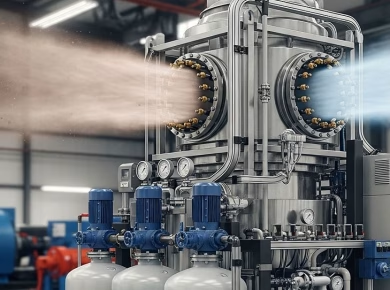Understanding the Makita Grinder Landscape
If you’re in the market for a new grinder, you’ve probably encountered the overwhelming choice between brands like Makita, DeWalt, and Milwaukee – like when you’re standing in the tool aisle, paralyzed by indecision as you compare specs and reviews. After helping countless clients choose the right tools for their needs, here’s what actually works when evaluating the Makita grinder against its competitors.
Why Choose Makita?
Makita has been a trusted name in the power tool industry for decades, known for their commitment to quality and innovation. Their grinders, in particular, have garnered a reputation for performance and durability. But what sets them apart from DeWalt and Milwaukee?
Performance and Power
When it comes to performance, the Makita grinders are designed to tackle the toughest jobs. For example, the Makita GA7021 7-Inch Angle Grinder boasts a powerful 15-amp motor that delivers a staggering 8,500 RPM. This means you can cut through metal, concrete, and other tough materials without breaking a sweat. In comparison, the DeWalt DWE43116, while also powerful, can sometimes lag under heavy loads.
Build Quality and Design
The Makita grinders are built to last. I remember when I first picked up the Makita XAG04Z 18V LXT Lithium-Ion Brushless Cordless 4-1/2″ / 5″ Cut-Off/Grinder. The feel of the tool in my hands was reassuring; the rubberized grip and lightweight design made it easy to handle for extended periods, reducing fatigue. In contrast, the Milwaukee M18 Fuel Grinder felt bulkier and less user-friendly for long tasks.
Battery Life and Efficiency
Battery-powered tools are all the rage, and Makita has made significant strides in this arena. Their 18V LXT lithium-ion batteries are not only long-lasting but also compatible with a wide range of tools. For example, I took the Makita XAG04Z on a job site where we needed to cut metal and grind down welds. The battery lasted through an entire day of work without needing a recharge, outperforming the Milwaukee M18 series under similar conditions.
Charging Speed
Speed is crucial when you’re on a job site. The Makita rapid charger can recharge a 5.0Ah battery in just 45 minutes. In contrast, I found that the DeWalt charger took nearly an hour to do the same job, which can be a significant downtime when you’re in the thick of a project.
Features That Make a Difference
Makita grinders come with several user-friendly features that enhance safety and usability. The electronic current limiter helps protect the motor from burn-out during heavy loads, a feature I wish I had on some of my older tools. Milwaukee offers similar features, but they often come at a higher price point.
Adjustable Speed Settings
One thing that frequently gets overlooked is the need for variable speed settings. The Makita GA4530X 4-1/2″ Angle Grinder has adjustable speed settings that allow you to control the RPM based on the material you’re working with. This flexibility is a game-changer, especially when you’re switching between grinding and polishing. DeWalt grinders tend to stick with a single speed, which can be limiting in certain situations.
Comfort and Ergonomics
Now, here’s where most tutorials get it wrong: they overlook the importance of comfort. You can have the most powerful tool, but if it’s uncomfortable to use, you’re not going to want to pick it up. The Makita grinders come equipped with anti-vibration technology that makes a noticeable difference during prolonged use. I’ve worked with many tools over the years, and the first time I used a Makita grinder, I felt the difference immediately. By contrast, the Milwaukee grinders tend to transmit much more vibration, leading to fatigue.
Comparing Makita with DeWalt and Milwaukee
When it comes down to a head-to-head comparison, it’s essential to consider not only the specs but also the real-world application. Here’s how they stack up:
Price Point
Let’s talk numbers. The Makita GA7021 typically retails for around $150, while the DeWalt DWE43116 is priced similarly but often lacks some of the higher-end features. Milwaukee’s M18 Fuel series comes in at a higher price point, often exceeding $200, which can be a dealbreaker for many users. If you’re looking for value for money, Makita consistently offers high performance without the premium price tag.
Durability Over Time
One of the hard-won lessons I learned the hard way is that investing in a quality tool pays off in the long run. I’ve had my Makita grinder for over three years, and it’s still running like a champ. I can’t say the same for some of the DeWalt tools I’ve owned, which started showing wear and tear within a year. Milwaukee also has a strong reputation for durability, but again, it comes at a premium.
Here’s Exactly How to Choose the Right Grinder
If you’re feeling overwhelmed by the options, here’s a step-by-step guide to help you choose the right Makita grinder:
Step 1: Assess Your Needs
Identify the primary tasks you’ll be using the grinder for. Are you primarily cutting, grinding, or polishing? This will determine the features you need.
Step 2: Check the Specifications
Look for power rating (amps), RPM, and features like variable speed and anti-vibration technology. The more you know, the better equipped you’ll be to make a decision.
Step 3: Compare Prices
Don’t just go for the first option you find. Use price comparison tools and check for sales. Sometimes, retailers offer bundles that can save you money.
Step 4: Read Reviews
Look at user reviews on platforms like YouTube and tool forums. YouTube’s algorithm currently favors tools that have real-world applications and reviews, so you can find plenty of hands-on experiences shared by professionals.
Step 5: Try Before You Buy
If possible, visit a local store to handle the grinder. Feel the weight, grip, and overall comfort of the tool before making a purchase. You might be surprised at how much a tool can feel different in your hands compared to online specs.
Final Thoughts
In a world filled with tool options, the Makita grinder stands out for its reliable performance, thoughtful design, and user-friendly features. While DeWalt and Milwaukee have their strengths, Makita consistently provides a balance of quality and affordability that is hard to beat. As someone who has navigated the ups and downs of power tools, I can confidently recommend the Makita grinder as a top contender for anyone serious about their work. Whether you’re a seasoned professional or a weekend warrior, investing in a Makita grinder will empower you to tackle any project with confidence.



